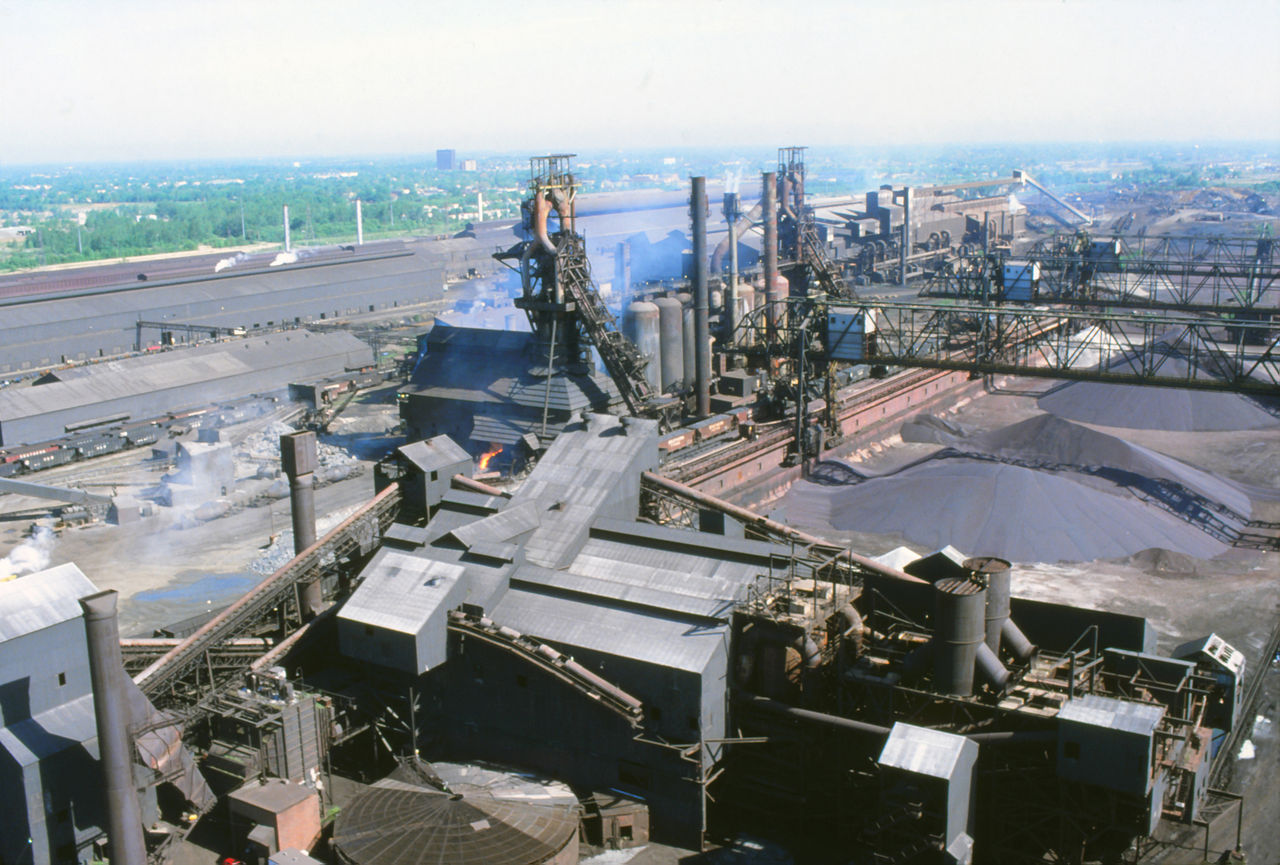
Michigan’s contributions to the national list of the worst contaminated sites grew by one last month when the former McLouth Steel Corporation site was added to the list.
Superfund, officially known as the Comprehensive Environmental Response, Compensation, and Liability Act of 1980, was created to handle and clean up closed and abandoned hazardous waste sites.
Part of that includes the National Priorities List, which guides the U.S. Environmental Protection Agency in determining which sites to investigate further.
Being added to the list makes the Trenton site in the Downriver area of Detroit eligible for federal Superfund cleanup funding.

Detroit Steel Company, Trenton Marine Terminal, Photo by Gary Wilson
The EPA’s official listing notes the critical location of the McLouth site in relation to fishing and recreation in the river and its proximity to Humbug Marsh, a federal wildlife refuge. Surface runoff and contaminated stormwater discharges to the river, according to the EPA.
“The McLouth site has raised concerns about potential pollution of the Detroit River based on its location along the shoreline,” University of Detroit Mercy environmental attorney Nick Schroeck told Great Lakes Now.
“It’s important for cities like Trenton to have assistance in cleaning up former industrial sites, and to put the property back to productive use to generate property tax revenue,” he said. Schroeck has been tracking Superfund sites for the last decade.
McLouth Steel Corp site not alone as an area that needs attention
The McLouth Steel Corp site has not been on the radar of the broader community of Great Lakes activists who lobby for federal money for Great Lakes restoration and cleanup of toxic sites.
Superfund money comes from a separate federal source than the Great Lakes Legacy Act that is focused on a list of sites officially designated as Areas of Concern (AOCs).

Matt Doss, Policy Director Great Lakes Commission, courtesy of glc.org
“We hope the addition of the McLouth Steel site to EPA’s National Priorities List will accelerate cleanup work there and are prepared to assist as appropriate,” said Doss who is the commission’s policy director and coordinates work on AOC’s.
The McLouth site isn’t the only federal Superfund site in Michigan near a Great Lake or part of the Great Lakes system.
The Ten-Mile Drain site bordering Lake St. Clair is high on Michigan’s Department of Energy, Great Lakes & Environment (EGLE) Superfund watch list, David Kline told Great Lakes Now.
EGLE is “working that site” to keep PCBs from migrating from a nearby canal to Lake St. Clair, said Kline who manages EGLE’s Superfund section.
The site was discovered in 2001 and contaminated sediment was removed in 2002, but re-contamination was discovered in 2006. The site was added to the EPA’s National Priorities List in 2010.
Kline said fish sampled at the Ten-Mile Drain site have high levels of PCBs and it will have to be worked for “several more years.”
Lake St. Clair empties into the Detroit River and ultimately Lake Erie.
A new concern for Kline is the emergence of PFAS, a substance that doesn’t break down in the environment. Kline told Great Lakes Now that the impact of PFAS on Superfund sites is in the monitoring and investigative stage.
Kline also cited the Muskegon region which borders Lake Michigan as a prominent area for Superfund sites. The seven sites located there are mostly related to Muskegon’s chemical manufacturing history and he said they are isolated and the “human health concerns have been addressed.”
While the legacy problems associated with chemical manufacturing remain, Muskegon’s waterfront is in the midst of a comeback and the city has become a destination stop for the cruise ship industry.
Superfund: “Not so super”
The EPA in the Trump administration has made Superfund cleanup a priority, claiming it lagged under President Barack Obama.
The agency in 2018 created an “Administrator’s Emphasis List” that will identify sites that can be targeted for “immediate and intense action,” according to the EPA Superfund website. Inclusion on the list does not guarantee a site will receive increased funding.
Michigan’s Kalamazoo River site was added to the Emphasis List in 2018.
Kline said his work with the EPA went well in the Obama administration and there’s been no change under the Trump EPA.
But Schroeck said “the Superfund program is not super in terms of resources.”
A tax on the oil and chemical industries that funded the program expired long ago, according to Schroeck, and Congress has failed to renew the tax or appropriate revenue from other sources.
“Without more money for cleanup, many of these sites will remain impaired by contamination for the foreseeable future,” Schroeck said.




